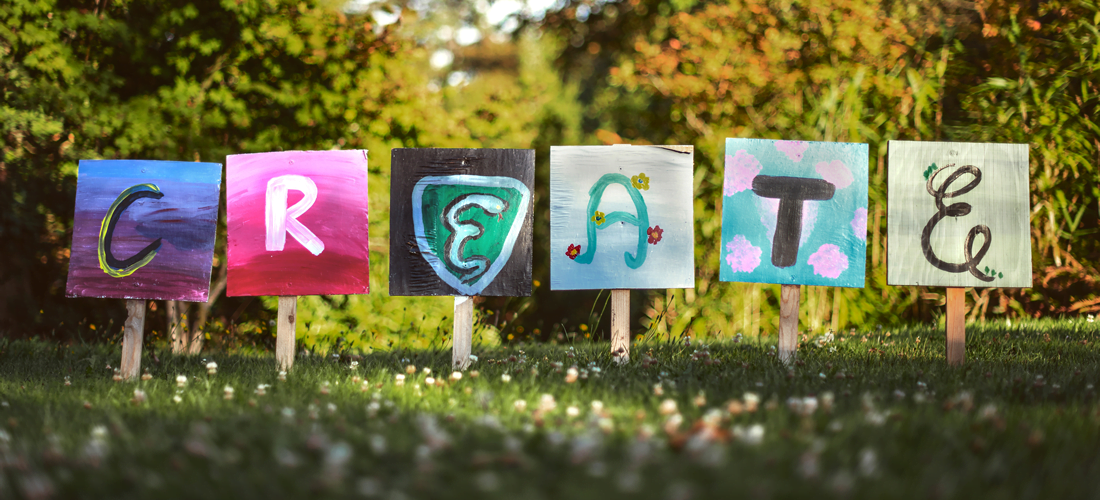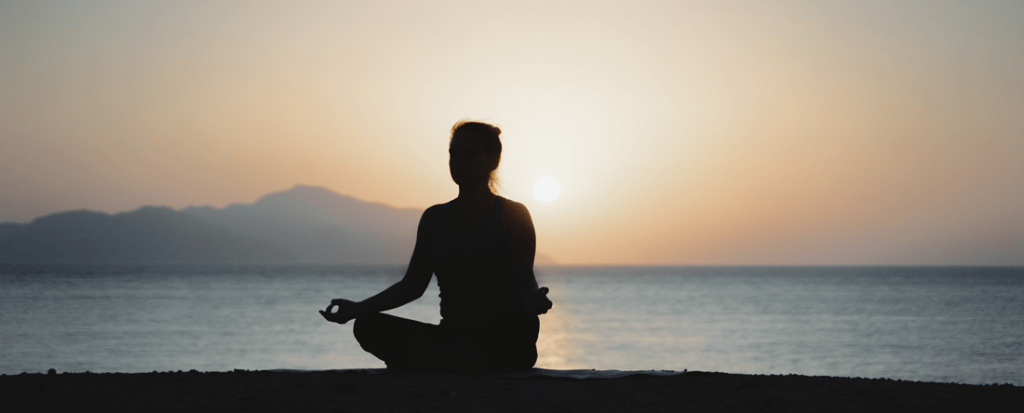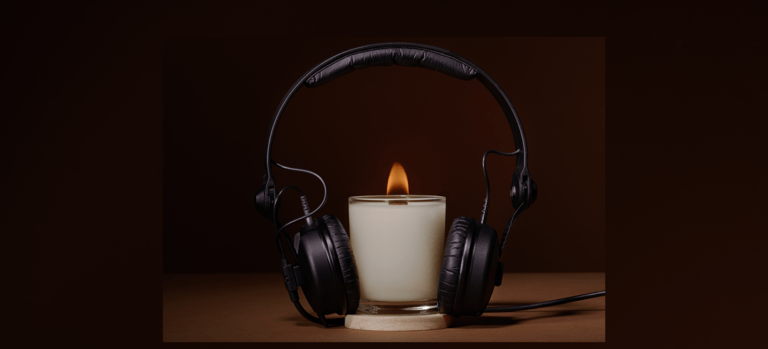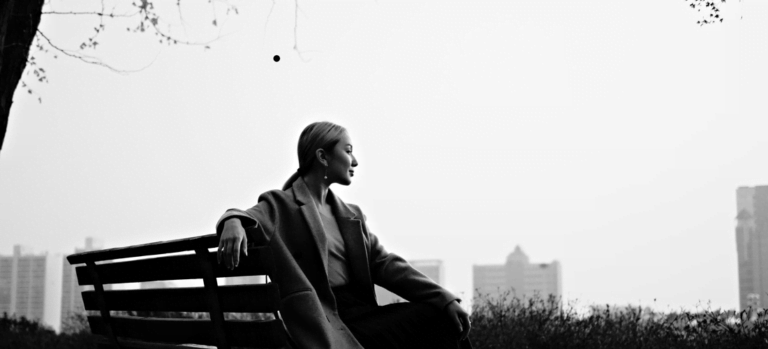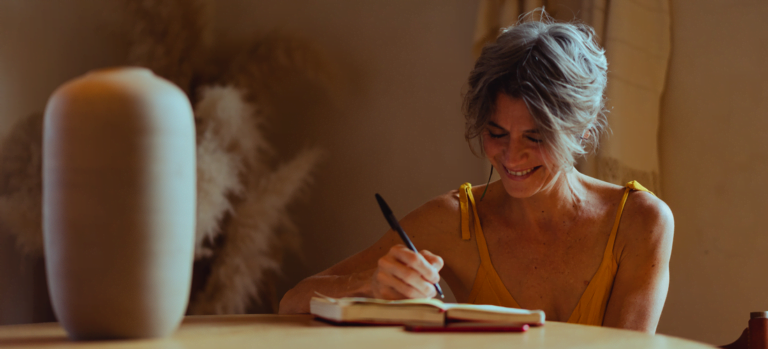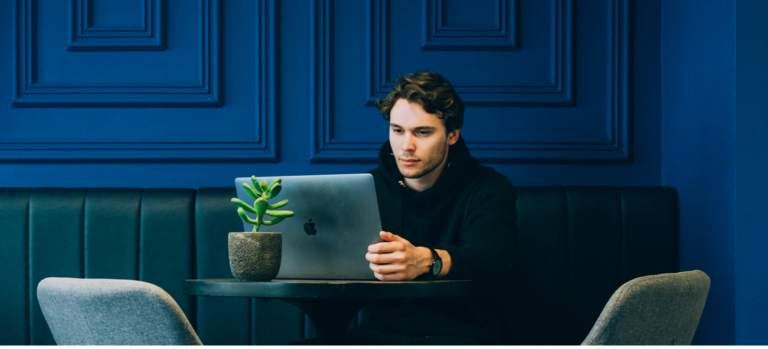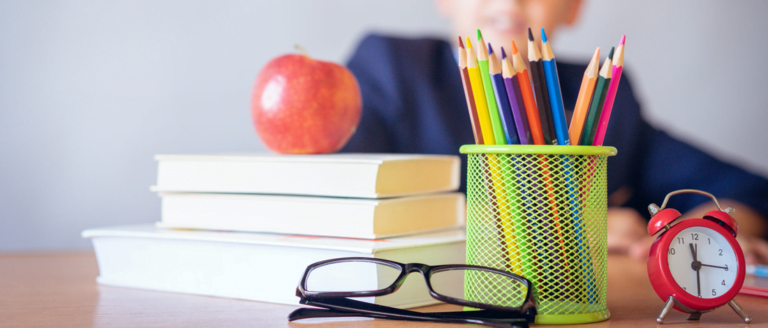Unlocking creative potential is an integral part of our personal growth journey that often remains unexplored. Yet, it is this potential that fuels innovation, problem-solving, and self-expression in every aspect of our lives. Welcome to our blog where we delve into the depth of creative potential and how its efflorescence can catalyze an unprecedented level of personal growth. Here, we aim to inspire, empower, and guide you on your unique path to uncovering and harnessing your innate creativity. Let’s embark together on this transformative journey of growth and creative discovery.
Practices to Break Through Creative Blocks
1. Change Your Environment
Sometimes, a change of scenery can trigger new ideas. Step away from your usual workspace and find a different environment, such as a park, coffee shop, or even a different room at home. The change in surroundings can stimulate fresh perspectives.
2. Mindfulness and Meditation
Practicing mindfulness and meditation can help quiet your mind and reduce stress, which are common contributors to creative blocks. These practices can create mental space for new ideas to emerge.
3. Limitations and Constraints
Embrace constraints as a way to challenge your creativity. Set limitations such as using only a certain color palette, restricting word counts, or working with limited materials. Constraints can force you to think more creatively within defined parameters.
4. Freewriting or Brainstorming
Set a timer and write or brainstorm without any judgment or editing. This helps to bypass your inner critic and allows ideas to flow more freely. Quantity often leads to quality, so don’t be afraid to generate a lot of ideas.
5. Creative Exercises and Prompts
Engage in creative exercises or prompts to spark your imagination. These could be writing prompts, drawing challenges, or improvisational activities that push you out of your comfort zone.
6. Collaboration and Discussion
Collaborating with others or discussing your ideas with friends, colleagues, or mentors can provide fresh perspectives and insights. Feedback from others can help you see your work from different angles.
7. Unstructured Play
Engage in unstructured, playful activities that have no specific goal. This can include doodling, playing with building blocks, or experimenting with random materials. Playfulness can lead to unexpected creative breakthroughs.
8. Break Tasks into Smaller Steps
Sometimes the overwhelm of a large project can lead to creative blocks. Break down your project into smaller, manageable tasks. Focusing on one step at a time can make the process less intimidating and more achievable.
9. Study Other Art and Media
Explore different forms of art, literature, music, or films that you’re not familiar with. Exposure to new ideas and styles can stimulate your own creativity and offer unique perspectives.
10. Take a Break and Rest
Pushing too hard can lead to burnout and creative fatigue. Allow yourself to take breaks and rest. Engaging in activities unrelated to your creative pursuit can give your mind the space it needs to recharge.
11. Revisit Past Work
Revisit your previous creative work. Sometimes, looking back at what you’ve done can inspire new ideas or help you see opportunities for improvement and growth.
12. Physical Activity
Engaging in physical activities like walking, jogging, or yoga can help clear your mind and increase blood flow, leading to enhanced creative thinking.
Remember that creative blocks are a normal part of the creative process. Each person’s journey is unique, so experiment with different practices to find what works best for you. Consistency, patience, and a willingness to explore various strategies are key to breaking through creative blocks.
Understanding Creative Potential
Creativity can be defined as the capacity to generate ideas, solutions, or products that are both novel and appropriate. It involves thinking outside the box, challenging the status quo, and finding new ways to approach problems or tasks.
Creative potential, on the other hand, refers to an individual’s ability to produce creative work. It’s an untapped reservoir of innovative thought that can be nurtured and expanded through continual practice, exposure to diverse experiences, and environments that encourage personal growth and unconventional thinking.
Debunking common myths about creativity
Myth: Creativity is only for artists.
Debunk: Creativity is not limited to traditional artistic pursuits. It encompasses problem-solving, innovation, and thinking outside the box, which are valuable in various fields like business, science, and technology.
Myth: Creativity is an innate talent, not a skill.
Debunk: While some individuals might have a natural inclination towards creativity, everyone can develop and enhance their creative abilities through practice, learning, and experimentation.
Myth: Creativity only strikes when you’re inspired.
Debunk: Waiting for inspiration can be limiting. Creativity often comes through consistent effort and working through challenges. The more you engage in creative activities, the more ideas you generate.
Myth: Mistakes are failures in creativity.
Debunk: Mistakes are valuable learning experiences. They can lead to unexpected outcomes that might spark new creative directions. Embracing mistakes fosters growth and innovation.
Myth: Creativity diminishes with age.
Debunk: Creativity doesn’t have an expiration date. There are plenty of people known for their creativity in old age. In fact, experience and accumulated knowledge can enhance your creative thinking over time, leading to deeper and more insightful ideas.
Myth: Creative people are always confident about their ideas.
Debunk: Doubt and uncertainty are common among creative individuals. The creative process involves exploring uncharted territory, which inherently involves moments of self-doubt.
Myth: Creativity is a solitary endeavor.
Debunk: Collaboration and diverse perspectives can significantly enhance creativity. Engaging with others can lead to new ideas, innovative solutions, and personal growth.
Myth: Creativity requires a perfect environment.
Debunk: While a conducive environment can help, creativity can thrive in various settings. Constraints and challenges can even stimulate more innovative thinking.
Myth: You need a lot of free time to be creative.
Debunk: Creativity can be integrated into your daily routine, even in small doses. Short bursts of creative activity can accumulate over time and lead to significant progress.
Myth: Creative work is always enjoyable and effortless.
Debunk: Creativity involves both joy and effort. It’s a process that includes moments of frustration and hard work, but the satisfaction of creating something meaningful makes it worthwhile.
By dispelling these common myths about creativity, individuals can better understand and embrace their creative potential, leading to more enriching personal growth experiences.
The Spectrum of Creative Expression
The spectrum of creative expression is vast and diverse, offering limitless opportunities for personal growth. It spans various domains from visual art, music, and dance, to writing, cooking, and beyond. Each individual has unique creative potential that can manifest in a multitude of ways, often transcending traditional categories.
Creative expression isn’t limited to producing tangible artifacts; it’s about the process of exploration, experimentation, and discovery. Cultivating creativity fosters innovative thinking, problem-solving, resilience, and a deep sense of fulfillment. It allows us to perceive the world in novel ways, discover our passions, and realize our full potential.
The Link between Creativity and Personal Growth
Embracing creativity provides an avenue for self-discovery and personal growth. It is through the process of creating that we explore our perceptions, challenge our assumptions and stimulate our minds. The act of creating art, writing, or even problem-solving in a new way, uncovers our innate ability to innovate, adapt, and evolve.
These creative explorations not only broaden our understanding of ourselves but also cultivate our personal growth. They allow us to tap into our hidden potential, discover our unique capabilities, and ultimately, guide us towards a more self-aware and fulfilling life.
Overcoming Challenges and Fears Through Creative Endeavors
Self-Expression and Communication
Creative endeavors provide a platform to express thoughts, emotions, and ideas that might be difficult to communicate verbally. Engaging in activities like writing, art, or music can help individuals overcome challenges related to self-expression, allowing them to process and share their feelings in a safe and cathartic manner.
Facing Failure and Resilience
Creativity involves experimentation, which inherently leads to failures or unsatisfactory outcomes. Through creative pursuits, individuals learn to embrace failures as stepping stones to improvement. The process of overcoming creative setbacks fosters resilience and a growth mindset that extends beyond the creative realm.
Fear of Judgment
Many people fear criticism or judgment when sharing their creative work. Engaging in creative activities can help build self-confidence by gradually exposing individuals to feedback. Over time, they learn to distinguish constructive criticism from unhelpful negativity, enabling personal growth in handling criticism across various life situations.
Problem-Solving and Adaptability
Creative endeavors often involve finding innovative solutions to artistic challenges. This skill transfers to everyday life, encouraging individuals to approach problems with a more open and adaptable mindset. The experience of creatively problem-solving can alleviate anxieties about tackling unfamiliar issues.
Embracing Vulnerability
Creative pursuits require vulnerability, as artists often pour their emotions and thoughts into their work. This vulnerability encourages individuals to become more comfortable with opening up, which can extend to personal relationships and promote emotional growth.
Breaking Routine and Comfort Zones
Trying new creative activities introduces novelty into one’s routine. Stepping out of comfort zones through creativity prepares individuals to take calculated risks in other areas of life, leading to personal development and greater self-awareness.
Managing Stress and Anxiety
Engaging in creative activities such as painting, playing an instrument, or crafting can serve as therapeutic outlets. The process of creation can divert attention from stressors, reduce anxiety, and promote relaxation, contributing to overall mental well-being.
Time Management and Discipline
Consistently dedicating time to creative projects enhances time management skills and discipline. Overcoming the challenge of finding time for creative activities can translate into better organizational skills and a more balanced lifestyle.
Cultivating Patience
Creative projects often require time and dedication, teaching individuals the value of patience. Learning to appreciate the slow, step-by-step progress in creative endeavors can extend to a more patient approach to personal growth and life goals.
Reframing Perfectionism
Creative endeavors can help individuals reframe their perspective on perfectionism. The iterative process of creating allows them to see the beauty in imperfections and understand that the journey itself is just as valuable as the final result.
Engaging in creative activities offers a unique opportunity for personal growth by challenging and overcoming various fears and obstacles. The skills and mindset developed through creative endeavors often extend far beyond the artistic realm, enriching multiple aspects of life.
Tapping into Your Creative Wellspring
Cultivating the right mindset is instrumental in unlocking an individual’s creative potential. This process primarily involves embracing a growth-oriented outlook, where challenges are seen as opportunities for learning rather than obstacles. This mindset encourages experimentation and the exploration of new ideas without the fear of failure.
By adopting this perspective, one can enhance their personal growth and innovation skills, effectively unlocking their creativity. The willingness to take risks, coupled with an open-minded approach to problem-solving, paves the way for ground-breaking ideas and solutions. Therefore, fostering a growth mindset is key to unleashing and nurturing our inherent creative potential.
Unleashing our creative potential and catalyzing personal growth often involves drawing inspiration from a myriad of sources. Inspiration from within is a deeply personal, introspective journey that draws on our thoughts, experiences, and emotions. It involves exploring our inner landscapes, engaging with our dreams, and accessing our subconscious. This inward exploration can fuel originality and foster unique perspectives.
Meanwhile, external sources of inspiration are equally important. They might include nature, art, literature, or the accomplishments and ideas of others. These sources provide stimuli that broaden our horizons, promote new ways of thinking, and expose us to diverse perspectives. They inspire us to step out of our comfort zones, challenging established beliefs and catalyzing personal growth. Thus, a balanced fusion of inner introspection and external exploration is crucial for harnessing our creative potential.
Creative Expression as a Tool for Self-Reflection
Creative projects offer a unique platform for individuals to express, explore, and understand their emotions and thoughts. Such projects, which can span a multitude of mediums, from painting and sculpture to writing and music, can serve as a therapeutic outlet. They allow people to project their internal state into tangible creations.
This process can lead to increased self-awareness and personal growth, as individuals gain new perspectives on their feelings and thought patterns. The act of creation itself also stimulates the brain, potentially unlocking new realms of creative potential.
Art, in its multitude of forms, can serve as a powerful medium for introspection and a unique gauge of personal growth. A person’s creations, whether they be paintings, sculptures, compositions, or written works, often reflect their mindset, experiences, and emotions at the time of creation. Therefore, observing the evolution of one’s artistic output over time can provide valuable insights into their journey of self-discovery and development.
Furthermore, the process of creating art often stimulates introspection, as individuals delve into their thoughts and feelings to draw inspiration. This act of self-exploration can lead to profound self-awareness and personal growth, unlocking latent potential and fostering emotional healing. Thus, engaging in artistic activities can be a powerful tool in tracking and encouraging personal and creative growth.
Integrating Creativity into Daily Life
Making time for creativity amidst a busy schedule is not only rewarding, but also essential for personal growth and unlocking our creative potential. It’s in the cracks of our daily routines where we often find inspiration. Even during the busiest days, setting aside a few minutes for creative pursuits—be it sketching, writing, or simply daydreaming—can spark innovative ideas and solutions.
On the other hand, infusing creativity into mundane tasks can turn everyday routines into opportunities for holistic growth. A dash of creativity can transform a routine task into an engaging, stimulating activity. For instance, experimenting with different ingredients while cooking, or trying a new route for your daily commute, can stimulate the brain and open doors to fresh perspectives. Embracing creativity in everyday life not only enriches the task at hand, but also enhances our problem-solving skills and promotes cognitive flexibility.
Collaborative Creativity and Its Benefits
Engaging with others can significantly foster our creative potential and propel personal growth. When we interact with diverse individuals, we expose ourselves to an array of perspectives and skills different from our own. This exchange of ideas can spark inspiration, stimulating novel ways of thinking that contribute to our creative prowess.
Moreover, learning from others’ experiences and skills can broaden our knowledge and understanding, enhancing our competence in various fields. This collaborative learning environment nurtures our adaptability and problem-solving skills, fundamental elements for personal development and growth.
Building meaningful connections through collaborative projects is a powerful strategy for unleashing creative potential and fostering personal growth. When individuals come together to work on a shared goal, they not only pool their unique skills and expertise, but also their diverse perspectives and ideas.
This fusion of talents and viewpoints often leads to innovative solutions that would not have come to light in an isolated work environment. Furthermore, collaborative projects provide an excellent platform for personal growth, offering opportunities for individuals to learn from each other, broaden their horizons, and build relationships based on mutual respect and cooperation.
Closing Thoughts
Harnessing our creative potential is more than just honing our abilities to create art or invent new ideas. It’s an integral part of our personal growth journey, a transformative process that expands our mind, enriches our soul, and imbues us with a greater sense of purpose. As we explore our creative potential, we unlock new facets of ourselves, gain deeper insights into our passions and strengths, and find the courage to step outside our comfort zones. So, let’s embark on this exciting journey of personal growth and unleash the extraordinary power of our creative potential.

